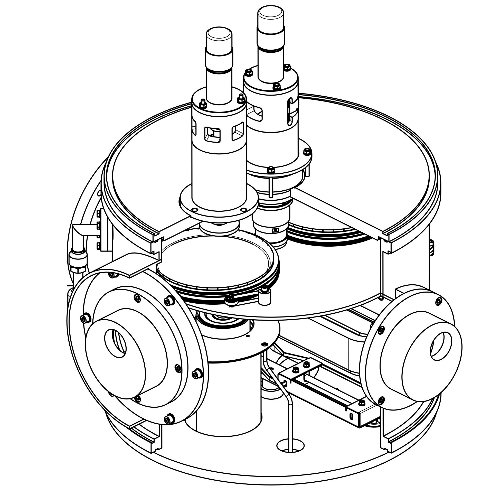Here’s the account of my journey to earning an engineering degree from Bauman Moscow State Technical University (BMSTU).
My thesis, titled “Vacuum Evaporation Machine for Osmium Films,” encapsulated the culmination of my studies. Throughout the final two years of my education in Moscow, I devoted all my term papers to various components of this intricate system, documented solely in Russian. Here, I’ll provide a brief overview of the machine.
The primary objective was to overhaul an existing vacuum apparatus, salvaging only the core chamber along with its accompanying units and technical elements, while reimagining the vacuum system entirely. This machine’s principal role is to both etch and deposit osmium films onto the emitting surfaces of cathodes of diverse configurations. To accommodate the diverse demands of cathode production techniques, a range of etching protocols was devised.
The system I describe was engineered to facilitate multiple etching regimens, catering to both high and low speeds while minimizing film irregularities. Given the specific parameters and dimensions of the cathodes, I devised various layout schematics, ultimately settling on a carousel design as the most suitable.
For the evaporative system, I opted for a magnetron and meticulously calculated its parameters based on the desired properties of the osmium film. Subsequently, I crafted the intra-chamber apparatus layout, strategically placing essential technological components and selecting the motion pattern for the cathode cartridge.
By optimizing the arrangement of vital components within the vacuum chamber, I ensured smooth operation and ease of maintenance. Kinematic analyses were performed using Matlab, simulating transmission ratios, motor frequencies, carousel rotations, and threaded connections.
Additionally, a vacuum system was engineered to attain requisite vacuum levels, factoring in gas sorption and desorption on chamber walls when estimating pumping times. To streamline maintenance procedures, I designed the vacuum system configuration on a portable frame.
Furthermore, I conducted a comprehensive analysis to select the most suitable components—such as pumps, flanged connections, current feed-throughs, and valves—within project constraints, ensuring optimal performance.
The culmination of this endeavor was a machine that resembled the following:

Subsequently, the completed machine was successfully deployed in the experimental production unit of the “Toriy” Company in Moscow.